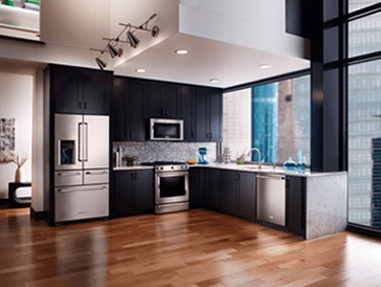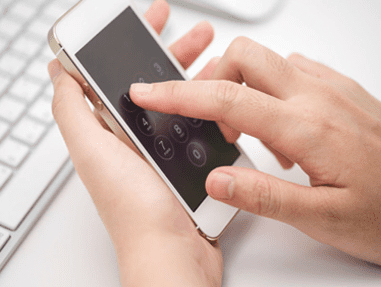
For all of your household appliance repair needs ... We service all brands!
FIND A PARTFreezers don’t run continuously but instead cycle on and off to maintain the right temperature. Understanding these cycles and how often freezers run can help you improve energy efficiency, troubleshoot problems, and avoid unnecessary repairs.
Let’s explore what affects freezer cycles and how you can keep yours running smoothly.
Freezers operate in cycles to keep a consistent temperature. The compressor kicks in to cool things back down when the inside temperature rises above the set level. Once the ideal temperature is reached, the compressor shuts off until it’s needed again.
On average, freezers run for about 30 minutes to an hour per cycle, depending on the model. These cycles typically add up to about 12-16 hours of runtime per day.
However, this can vary based on factors like the environment, the freezer’s condition, and how often it’s used.
Several factors can influence how frequently and how long your freezer cycles:
In general, freezers cycle on and off throughout the day, running about 12-16 hours total to maintain a consistent temperature of 0°F (-18°C), which is ideal for preserving food.
If your freezer seems to be running constantly, it may indicate a problem. Common issues include dirty condenser coils, a faulty thermostat, or poor ventilation. Take some time to observe your freezer’s cycles. If it seems to run more frequently or for longer than usual, it’s worth investigating further.

Freezers don’t run continuously but instead cycle on and off to maintain the right temperature. Understanding these cycles and how often freezers run can help you improve energy efficiency, troubleshoot problems, and avoid unnecessary repairs.
Let’s explore what affects freezer cycles and how you can keep yours running smoothly.
Freezers operate in cycles to keep a consistent temperature. The compressor kicks in to cool things back down when the inside temperature rises above the set level. Once the ideal temperature is reached, the compressor shuts off until it’s needed again.
On average, freezers run for about 30 minutes to an hour per cycle, depending on the model. These cycles typically add up to about 12-16 hours of runtime per day.
However, this can vary based on factors like the environment, the freezer’s condition, and how often it’s used.
Several factors can influence how frequently and how long your freezer cycles:
In general, freezers cycle on and off throughout the day, running about 12-16 hours total to maintain a consistent temperature of 0°F (-18°C), which is ideal for preserving food.
If your freezer seems to be running constantly, it may indicate a problem. Common issues include dirty condenser coils, a faulty thermostat, or poor ventilation. Take some time to observe your freezer’s cycles. If it seems to run more frequently or for longer than usual, it’s worth investigating further.
There’s nothing better than having a constant supply of ice at your fingertips, especially during a hot day or when hosting guests.
Understanding your ice maker can help you maintain it better, troubleshoot issues, and appreciate the technology that keeps things cool.
Let’s take a closer look at how ice maker works and how it creates perfect ice cubes every time!
It all starts with water. Your ice maker pulls water directly from your home’s supply line, which is connected to the refrigerator.
Before the water flows into the ice maker, it often passes through a filter to remove impurities. Clean water ensures your ice is clear, tastes fresh, and stays free of unwanted particles.
Once the water reaches the ice mold, the real magic happens. The ice mold consists of small trays where the water is evenly distributed. Your refrigerator’s cooling system freezes the water in these trays by circulating cold air or through refrigeration coils.
Sensors monitor the temperature, ensuring the water freezes completely without overworking the appliance.
When the water has turned into solid ice cubes, the ice maker gets to work.
A small heating element activates to warm the base of the ice mold. This loosens the ice, making it easy to eject. The machine’s motor then gently pushes the cubes into the storage bin below, where they’re ready for you to grab.
Once the ice drops into the bin, the process begins again. Sensors check the bin’s level to prevent overproduction, ensuring your ice maker produces just the right amount to meet your needs.
This automated cycle repeats throughout the day, keeping your ice supply steady without any effort on your part.

Several key parts work together seamlessly to produce ice:
When these components work correctly, you get clean, ready-to-use ice.
Despite its efficiency, an ice maker can sometimes run into issues. If your ice maker isn’t producing ice, here are a few common culprits:
If you notice any of these issues, addressing them quickly and getting the ice maker repaired done by a professional can help avoid bigger problems down the line.
To keep your ice maker working efficiently, follow these simple tips:
With just a little maintenance, you’ll ensure your ice maker continues to deliver fresh, clean ice whenever you need it.
Now that you know how ice maker works, it’s easy to see how important proper maintenance is to keep things running smoothly. If your ice maker isn’t performing as it should, don’t let it disrupt your day.
Contact A Tech Repair Inc. for professional ice maker repairs and maintenance.
Our team will get your appliance back to perfect working order so you can enjoy an uninterrupted supply of ice!
Appliances are essential to keeping your home running smoothly, but when they break down, you’re often left wondering how much it will cost to fix them.
Understanding how much is appliance repair can help you plan ahead, budget properly, and decide whether it’s worth fixing or replacing it.
Let’s break down the factors, common repairs, and how you can save money.
Several factors determine how much you’ll spend on appliance repairs:
Here’s a breakdown of common appliances and their typical repair costs:
While these are average price ranges, actual costs can vary depending on your appliance’s brand, model, and the technician’s rates.
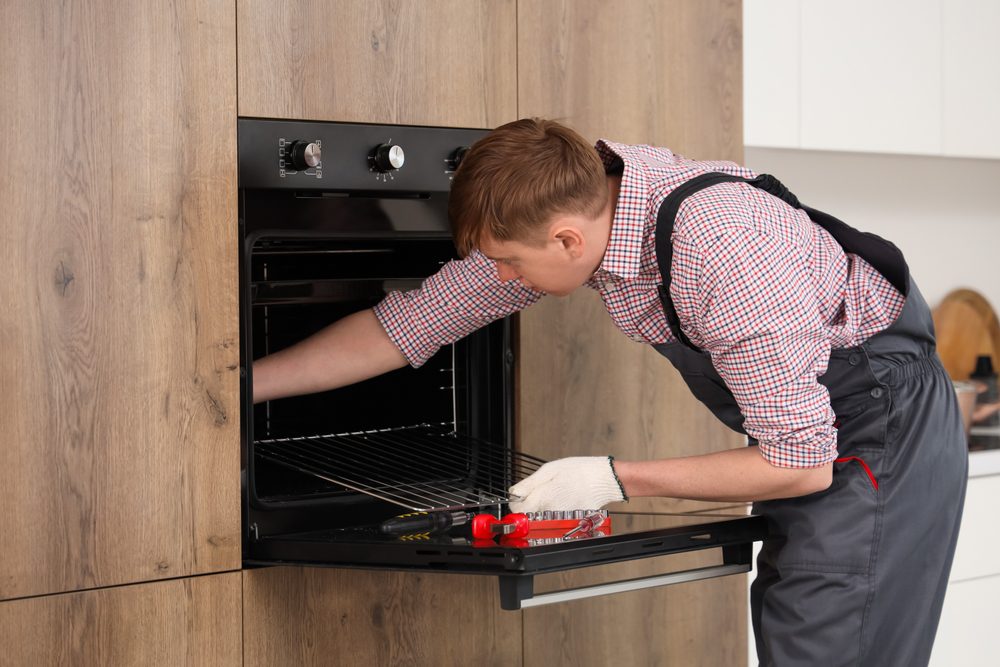
When faced with a repair, it’s important to ask yourself whether fixing the appliance makes financial sense. A general rule of thumb is: if the repair cost exceeds 50% of the price of a new appliance, replacement might be the better option.
Also, consider the appliance’s age. For example:
If your appliance is nearing the end of its life span, investing in a new one may save you money in the long run.
One of the best ways to avoid costly repairs is through regular maintenance. Simple tasks like cleaning filters, inspecting for leaks, and checking hoses can prevent small issues from turning into major repairs.
Schedule periodic professional inspections to catch problems early and keep your appliances running efficiently. This proactive approach can significantly reduce your spending on future repairs.
Now that you have a better idea of how much is appliance repair, it’s clear that repair costs can vary widely. If your appliance breaks down, don’t stress. Professional, reliable, and affordable repairs at A Tech Repair are just a call away.
Contact us today for transparent pricing and expert solutions that keep your appliances running like new.
Don’t wait—let the experts save you time, money, and hassle!
A stove is one of the most essential appliances in your home, keeping your meals warm and your kitchen functional. But when it breaks down, is it worth repairing a stove or should you replace it instead?
This decision often comes down to balancing costs, benefits, and practicality.
Let’s explore how to make the right choice for your needs.
Stoves, like any other appliance, aren’t immune to wear and tear. Some of the most common issues you might face include burners not heating properly, fluctuating temperatures, or electrical glitches.
Repair costs can vary widely depending on the problem, often ranging between $50 and $400.
Now, consider the cost of a new stove, which typically starts at around $400 and can go well over $2,000 for high-end models.
To simplify the decision, many professionals suggest the “50% rule”: if the cost of repairs is more than half the price of a new stove, replacing it may be the smarter option.
When the stove repair costs are reasonable, fixing your stove can be a great decision.
Small issues like a faulty burner or a broken switch often require quick and affordable repairs, saving you the headache of shopping for a new appliance.
Plus, repairing rather than replacing contributes to environmental sustainability by reducing electronic waste.
Stove repairs can also extend the lifespan of your appliance, allowing you to get a few more reliable years out of it. This means you save money in the short term while maximizing the value of your initial investment.

However, there are times when replacing your stove makes more sense. If you’re dealing with frequent breakdowns or a major issue like a malfunctioning control board, repairs might become an endless money pit.
Older stoves with outdated features or poor energy efficiency are also strong candidates for replacement.
Upgrading to a modern, energy-efficient stove can save you money on utility bills in the long run. Many new models come with advanced features, such as smart controls and faster heating elements, which can improve your cooking experience.
To decide whether repairing or replacing your stove is the best option, weigh a few key factors.
Start with the cost of the repair itself. Is it affordable, or would that money be better spent on a new appliance? Next, consider the age of your stove. If it’s been serving you for over a decade, replacement might offer better value.
Finally, think about energy efficiency—older stoves tend to consume more power, costing you more over time.
When in doubt, consulting a professional repair service can help you make an informed choice.
If you’re still wondering if it is worth repairing a stove, you don’t have to figure it out alone.
A Tech Repair Inc. specializes in diagnosing stove issues and helping you determine the best course of action.
Contact A Tech Repair Inc. today and let our team guide you toward a cost-effective solution that fits your needs.
Your oven is a key player in your kitchen, making everything from family dinners to holiday treats possible. But when it starts acting up, you’re faced with a tricky decision: oven repair or oven replacement?
Deciding which option is best depends on the severity of the problem, the cost of repairs, and how old your oven is.
Let’s break it all down so you can make an informed choice.
Ovens can run into a variety of problems, some minor and others more serious.
You might notice uneven heating, a door that doesn’t seal properly, or issues with the control panel. Electrical malfunctions and faulty heating elements are also common culprits.
Fixing these issues can cost anywhere from $100 to $600, depending on the severity.
Repairs can be quick and inexpensive for minor fixes like a broken seal or faulty burner. But if the issue is more complex, like a damaged control board, the costs can add up.
This is where you start weighing whether it’s better to repair or replace your oven.

When deciding, it helps to compare repair costs with the price of a new oven. Most ovens range from $500 to over $2,500 for high-end models.
A good rule of thumb is the “50% rule”: if the repair cost is more than half the price of a new oven, replacing it might make more sense.
Other factors come into play, too. If your oven is still under warranty, repairs could cost you little to nothing.
On the other hand, if it’s over 10 years old and breaking down frequently, investing in a new appliance could save you money and frustration in the long run.
Sometimes, oven repairs are the clear winner. If your oven is relatively new and the problem is minor, fixing it can save you money and get your appliance back to full function quickly.
Simple repairs, like replacing a heating element or fixing a thermostat, often come with a much lower price tag than buying a new oven.
Choosing to repair also helps reduce electronic waste, making it the eco-friendlier option. Extending the life of your current appliance can be a win for your wallet and the planet.
On the flip side, there are situations where replacing your oven is the smarter decision.
If it breaks down regularly or has a major issue like a cracked interior or faulty control board, repairs might be a temporary fix that ends up costing more over time.
Older ovens, especially those lacking modern energy-efficient technology, can also rack up higher utility bills. By upgrading to a newer model, you’ll enjoy improved performance, advanced features, and long-term energy savings.
If your appliance is nearing the end of its expected lifespan, replacing it might give you peace of mind and better value overall.
Still wondering about the best choice for your situation? Whether you’re leaning toward oven repair or replacement, A Tech Repair Inc. can help.
Our team specializes in diagnosing oven issues and guiding you through the decision-making process. With our expertise, you can feel confident about whether to fix your current appliance or invest in a new one.
Don’t let a faulty oven disrupt your life. Reach out to A Tech Repair Inc. today for a professional assessment and let us help you find the most cost-effective solution.
An electric stove is a reliable kitchen appliance, but like any device, it can face issues over time. Suppose you’ve encountered a situation where your electric stove burner is not working. In that case, it can be both frustrating and inconvenient, especially when you’re in the middle of preparing a meal.
Fortunately, many common problems that prevent your burner from functioning can be identified and fixed relatively easily.
Below, we’ll explore some reasons why your electric stove burner isn’t working and what you can do to fix it.
An issue with the burner coil is one of the most common reasons an electric stove burner does not work. The coil, which is responsible for heating, can become damaged or disconnected.
Over time, the coil can wear out, or its connection to the stove may loosen. If the coil appears warped or discolored or is not sitting correctly in its socket, it likely needs replacement.
Even if your burner coil appears fine, the problem might lie in the burner socket where the coil plugs in. If the socket has burn marks, rust, or any other signs of damage, it might not be conducting electricity properly.
You can test this by swapping the faulty burner with another working burner. If the new burner also doesn’t heat up, the issue likely resides in the socket, which may need replacement.
Sometimes, the problem with your electric stove burner not working can be traced back to loose or damaged wiring beneath the stovetop. Over time, wires can fray or become dislodged, causing a lack of electrical connection.
To check this, lift the stovetop and inspect the wiring connecting the burner to the control switch. If you notice any damage or looseness, replace the wires or reattach them securely.
The control switch regulates the power supplied to the burner. If this switch is defective, it could cause the burner to remain cold even when turned on.
You can test this by switching the suspected faulty burner to another control switch on your stove. If the burner works on a different switch, you’ll know the problem lies with the original control switch.
In some cases, the electric stove burner not working could be a symptom of a more significant electrical issue, such as a blown fuse or a tripped circuit breaker. Before inspecting the stove itself, ensure that your home’s electrical panel isn’t the source of the problem.
Reset the breaker or replace any blown fuses as necessary.
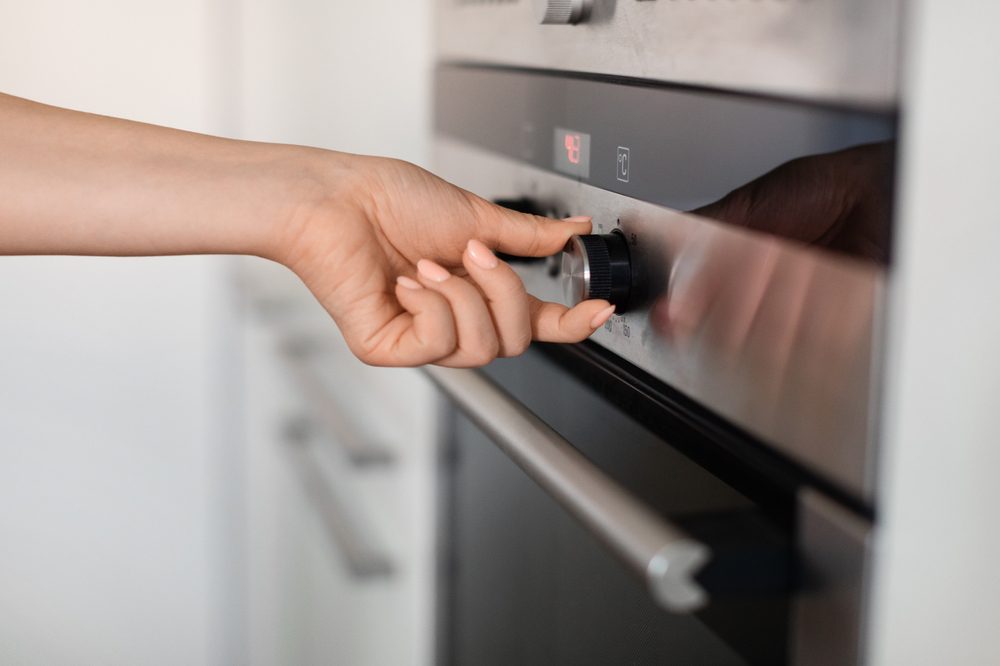
Once you’ve identified the cause of the problem, fixing it can be straightforward. For a damaged burner coil, purchase a replacement burner specific to your stove model and plug it into the socket.
If the issue is with the burner socket or control switch, replacement parts can be found at most appliance stores. However, handling wiring issues should be done cautiously.
Contacting a professional is best for stove repair if you’re uncomfortable working with electrical components.
If you’ve gone through the troubleshooting steps and your electric stove burner is still not working, it may be time to call in a professional. A-Tech Repair is always available to assist with any stove-related issues, offering expert advice and repair services to get your appliance back in top working condition.
Contact us today if you need professional help with any kind of stove malfunction!
Learning how to turn on a stove is essential in any kitchen. Whether using a gas or electric model, understanding how to operate your stove properly ensures safe and efficient cooking.
While both types of stoves serve the same purpose, they have different mechanisms for generating heat. In this guide, we’ll walk you through the simple steps on how to turn on a stove, gas, or electric ones so you can confidently start cooking without a hitch.
Gas stoves are famous for their instant heat and precise control. However, turning them on is slightly different from electric stoves due to the use of gas burners. Follow these steps to turn on your gas stove safely:
Before you turn on the stove, ensure the burner area is clear of any flammable objects, such as towels or packaging. Gas stoves use an open flame, so guaranteeing the cooking area is safe is essential.
Each burner on your gas stove has a control knob. To light a burner, turn the knob to the “light” or “ignite” setting. Most stoves have a click or ignition sound, indicating that the gas is flowing and the igniter is sparking.
If your stove has an automatic igniter, the burner will light by itself once the knob is turned to the ignition position. However, if you have an older model, you may need to light the burner manually using a match or lighter. Hold the flame near the burner as you turn the knob, and once the flame ignites, adjust the heat level as needed.
Once the burner is lit, you can adjust the size of the flame by turning the knob further. The high setting produces a larger flame, ideal for boiling water, while the low setting is perfect for simmering.

Electric stoves are known for their ease of use. They do not involve open flames.
Instead, they use electric coils or smooth, flat heating elements to cook food. Here’s how to turn on a stove if you have an electric model:
Look at the stove’s control panel, which typically includes knobs corresponding to each burner. Each burner is often labeled to match the knob controlling it. Ensure you’re selecting the right burner for your pot or pan.
Electric stoves use simple knobs to control the heat settings. Turn the knob of the corresponding burner to the desired heat level, such as “low,” “medium,” or “high.” The burner will begin to heat up, and the heating element will glow red once fully heated.
Unlike gas stoves, electric burners take a bit longer to heat up. Please wait a moment or two until the burner is hot before placing your cookware on it. You’ll know the burner is ready when it glows red for coil burners or becomes hot for smooth-top stoves.
As with a gas stove, you can adjust the heat at any time by turning the knob to increase or decrease the temperature. Electric burners retain heat for a little while after being turned off, so be careful when removing cookware.
Whether you’re learning to turn on a stove for the first time or dealing with a malfunction, ensuring your stove works appropriately is essential. If you encounter any gas or electric stove issues, A-Tech Repair is on standby to help.
Contact us today if you need professional help with any kind of stove malfunction!
An ice maker is a convenient feature in modern refrigerators. Still, it can be a significant inconvenience when it stops working. If you’re facing an issue with your ice maker not working, you’re not alone.
There are several common reasons why an ice maker might fail, and understanding these can help you troubleshoot and fix the problem and when to get an ice maker repair service. Here are the top reasons your ice maker isn’t working and how to fix them.
A frequent cause of an ice maker not working is an issue with the water supply. If the water line is blocked or kinked, the ice maker can’t get the water it needs to make ice.
Solution: Check the water line for any obstructions or kinks. Ensure the water valve is fully open and has adequate water pressure. If the water line appears damaged, you might need to replace it.
The water inlet valve controls the flow of water into the ice maker. If this valve is defective or clogged, it can prevent water from reaching the ice maker.
Solution: Inspect the water inlet valve for any signs of damage or debris. Replacing the valve is usually the best option if the valve is not functioning correctly.
A clogged or dirty water filter can restrict water flow to the ice maker, causing it to stop working.
Solution: Replace the water filter as per the manufacturer’s instructions. Typically, water filters must be replaced every six months, which can vary depending on usage and water quality.
Some ice makers have a switch or lever that must function in the “on” position. If this switch is accidentally turned off, the ice maker will not produce ice.
Solution: Locate the ice maker switch and ensure it is turned on. If you’re unsure where the switch is located, refer to your refrigerator’s user manual.
The ice maker may not produce ice efficiently if the freezer temperature is too high. The ideal temperature for ice production is between 0 and 5 degrees Fahrenheit.
Solution: Check and adjust the freezer temperature settings. Ensure the temperature is set correctly and wait 24 hours to see if ice production resumes.
Sometimes, the ice maker itself can be a problem. Internal components, such as the motor or the control module, can wear out or break over time.
Solution: Inspect the ice maker assembly for any visible damage. If parts appear broken or worn out, consider replacing the entire assembly, as this can often be more cost-effective than replacing individual components.
A faulty door seal can cause the freezer to lose cold air, making it difficult for the ice maker to produce ice.
Solution: Inspect the door seal for signs of wear or damage. If it is not creating a proper seal, it must be replaced to ensure the freezer maintains the correct temperature.
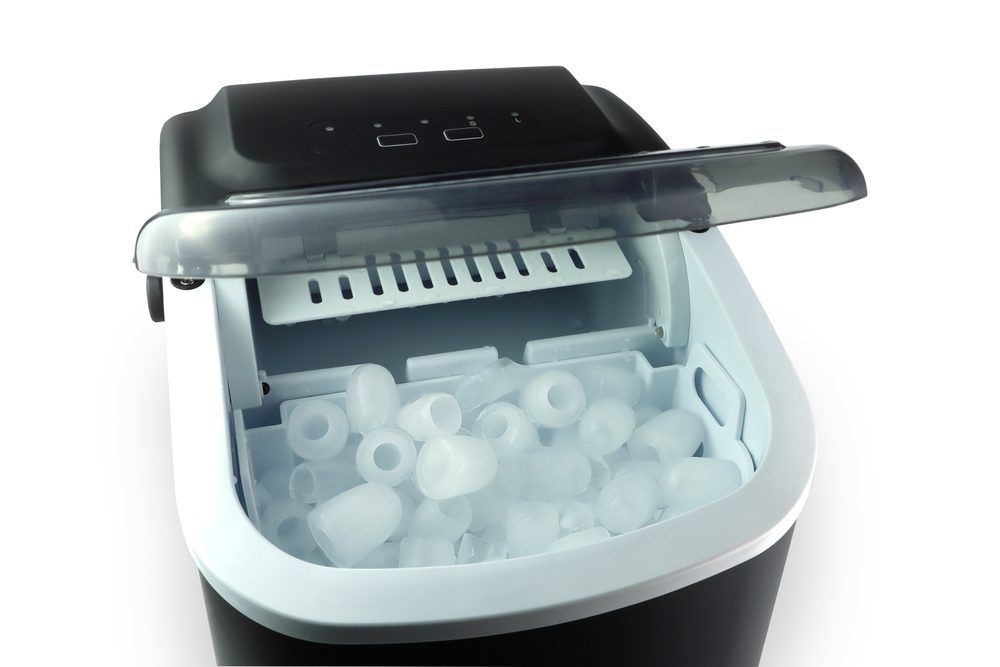
Dealing with an ice maker that doesn’t work can be frustrating. Still, by understanding these common issues and their solutions, you can often resolve the problem yourself. However, some issues may require professional assistance to diagnose and repair effectively.
If your ice maker faces persistent issues, contact A-Tech Repair for expert help. They provide reliable service to get your ice maker back in working order quickly and efficiently.
If you have any questions about HVAC systems or queries about installations or repairs, contact A-Tech Appliance Repair, who will gladly assist.
Lighting a gas stove may seem straightforward, but safely doing it is essential to prevent accidents. Whether using a stove with automatic ignition or a manual one, understanding how to light a gas stove correctly will help ensure your kitchen stays safe and functional.
This guide will walk you through the steps and safety tips you should follow when using your gas stove, including tips on when you need a stove gas repair service.
Modern gas stoves often come equipped with an automatic ignition system. Here’s a quick step-by-step guide on how to light a gas stove with this feature:
Older stoves or some models may require manual lighting. Here’s how to light a gas stove that doesn’t have automatic ignition:
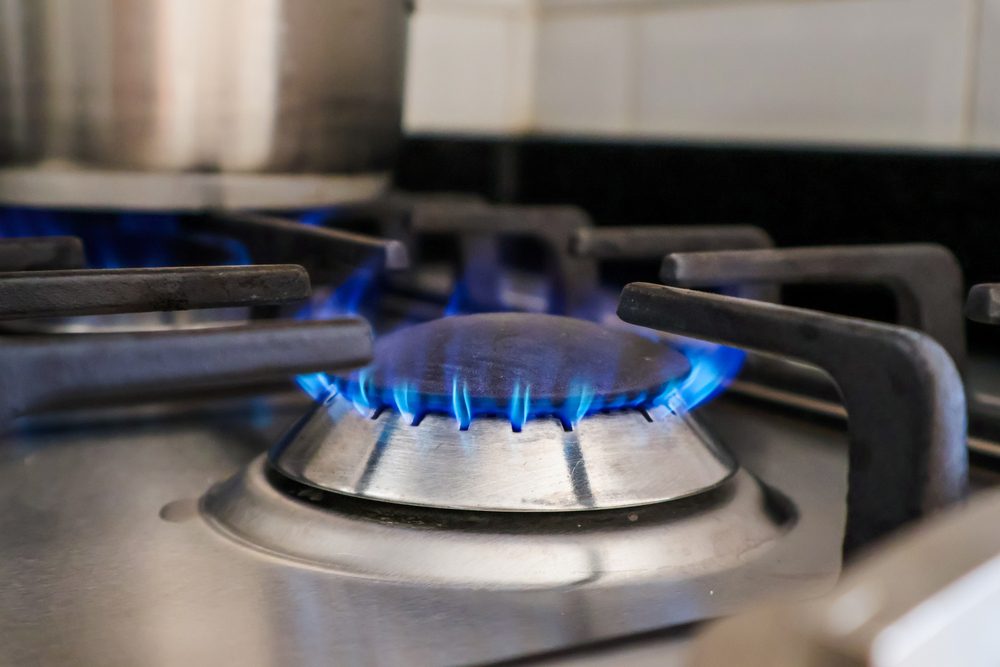
When learning to light a gas stove, keeping safety in mind is crucial. Gas stoves are highly efficient but can be hazardous if not used properly. Here are some essential safety tips to follow:
If the burner’s flame goes out while cooking, turn off the gas immediately and wait a minute or two for the gas to dissipate before attempting to relight the stove. Igniting the stove too soon after a flame goes out can result in a flare-up or dangerous gas accumulation.
If you experience ongoing issues lighting your gas stove or suspect a gas leak, it’s best to consult a professional. A-Tech Repair is your go-to resource for gas stove installation, repairs, and safety advice.
Their expert technicians can diagnose problems, install new units, and ensure your stove operates safely and efficiently. Never hesitate to call a professional when dealing with gas appliances, as safety should always come first.
If you have any questions about HVAC systems or queries about installations or repairs, contact A-Tech Appliance Repair, who will gladly assist.
Having a fridge that doesn’t make ice can be frustrating, especially during hot weather or when hosting gatherings. Several common issues could be the culprit if your fridge is not making ice.
The below will help you identify these problems and offer solutions to get your ice maker back in working order and when to get a refrigerator repair service.
One of the most common reasons a fridge does not make ice is an issue with the water supply. If the water supply is blocked or restricted, the ice maker can’t get the water it needs to produce ice.
Solution: Check the water line for any kinks or blockages. Ensure the water valve is fully open and the water pressure is sufficient. If the water line is damaged, it may need to be replaced.
The water inlet valve controls the flow of water into the ice maker. If this valve is defective or clogged, it can prevent water from reaching the ice maker.
Solution: Inspect the water inlet valve for any signs of damage or debris. If the valve is malfunctioning, it will need to be replaced. This is typically a job best handled by a professional.
A clogged or dirty water filter can restrict water flow to the ice maker, resulting in a fridge that does not make ice.
Solution: Replace the water filter according to the manufacturer’s instructions. Most filters must be changed every six months, which can vary depending on your fridge model and water quality.
Sometimes, the ice maker itself can be a problem. Components within the ice maker assembly, such as the motor or the control module, can wear out or break over time.
Solution: Inspect the ice maker assembly for any visible damage. If parts appear broken or worn out, consider replacing the entire assembly. This can often be more cost-effective than replacing individual components.
The ice maker may not produce ice efficiently if the freezer temperature is too high. The ideal temperature for ice production is between 0 and 5 degrees Fahrenheit.
Solution: Check and adjust the freezer temperature settings. Ensure the temperature is set correctly and wait 24 hours to see if ice production resumes.
A faulty door seal can cause the freezer to lose cold air, making it difficult for the ice maker to produce ice.
Solution: Inspect the door seal for signs of wear or damage. If it is not creating a proper seal, it must be replaced to ensure the freezer maintains the correct temperature.
Some refrigerators have a switch or lever that turns the ice maker on and off. If this switch is accidentally turned off, your fridge may not make ice.
Solution: Locate the ice maker switch and ensure it is in the “on” position. If you’re unsure where the switch is located, refer to your fridge’s user manual.

If you’ve tried all these solutions and still haven’t gotten your fridge to make ice, it might be time to call a professional. Identifying and resolving more complex issues can require expertise and the right tools.
For residents of Charlotte, NC, A-Tech Repair is the go-to solution for fridges that don’t make ice. Their experienced technicians can diagnose and fix the problem quickly, ensuring a steady supply of ice again.
If you have any questions about HVAC systems or queries about installations or repairs, contact A-Tech Appliance Repair, who will gladly assist.
Interested in finding out more about the services we offer? Fill out the form below!




